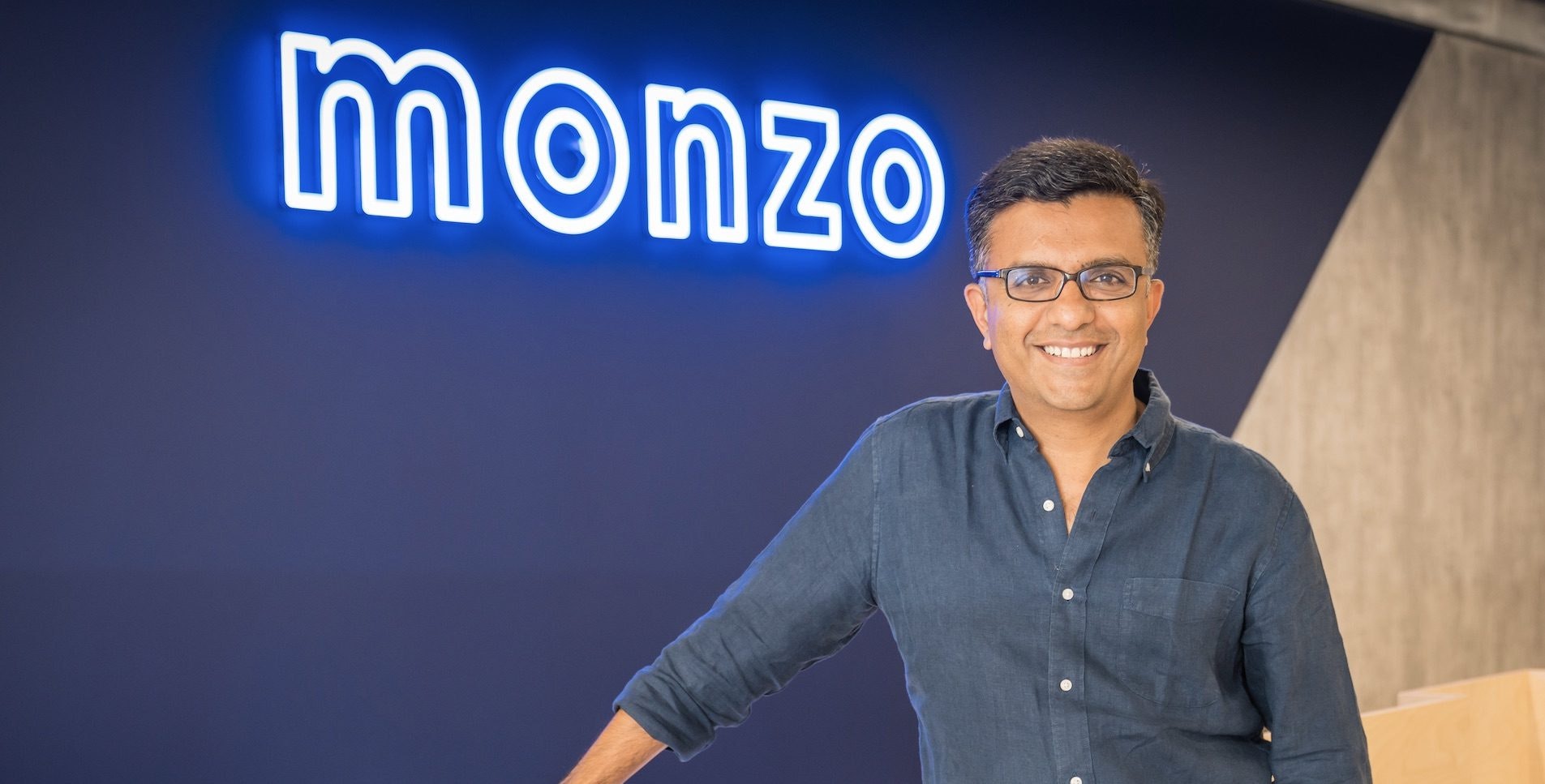Klarna has long been the poster child for European startup success. Founded in a tiny back-office in Stockholm by three young postgraduates in 2005, it had attracted funding from US VC heavyweight Sequoia by 2010.
Fast forward 11 years to March last year when it raised $1bn at a $31bn valuation, becoming Europe’s most valuable startup. Three months later, it raised another $639m, bumping its valuation up again to $45bn and securing it the title of the world’s second most valuable fintech after Stripe (last valued at $95bn).
But last month the tide changed for the BNPL giant, as a dramatic down round saw Klarna's valuation cut to $6.7bn — an 85% drop from a year earlier.
As Europe’s former most valuable startup, Klarna is a good touch point for the general health of the European startup ecosystem. It’s certainly got us thinking who could be next in the down round line.
So how exactly did this happen? We’ve pieced together a timeline of Klarna’s recent valuation history to give you a better idea of the story so far.
Klarna's valuation history: explained
September 2020 — Klarna valuation hits $11bn as startup becomes the fourth most valuable fintech in the world
In September 2020, Klarna's valuation more than doubled to $10.6bn when it raised $650m from Silver Lake Partners, BlackRock, GIC and Hmi capital.
At the time, investors rushed to defend its new price tag. Hans Otterling, partner at Northzone, told the Swedish press that this was a bargain compared to fintechs like Paypal or AfterPay, given how fast Klarna was growing.
“I would say that it is actually a low valuation of the company,” he said.
At that point talk of an IPO within one or two years for Klarna was circulating. So Sifted took a look at the growth in revenue multiples that the company would need in order to justify its new valuation on exit day, as well as the sticking power of consumers’ new desire for the BNPL checkout option and its chances in the US.
October 2020 — success breeds the next gen of entrepreneurs
As Klarna’s workforce grew, so too did its alumni of “Klarnauts”: by the time it was 15 years old, it had bred a significant group of top-class engineers and managers who went on to found their own startups.
Occasionally, they even received financial support from their former colleagues — including from Klarna CEO Sebastian Siemiatkowski.
From Lena Hackelöer’s journey from heading up marketing at Klarna to founding her own fintech Brite Payments, to Kristofer Ekman Sinclair’s transition from business development to developing his own payments startup Zimpler, we profiled the cream of the crop here.
March 2021 — valuation hits $31bn, making Klarna Europe’s most valuable startup
Across 2020, Klarna’s revenue increased 40% to $1bn. This Covid-fuelled growth was enough to convince a glittering lineup of new and existing investors to pour $1bn into the company in March 2021.
The round made Klarna Europe’s most valuable startup and the second most valuable fintech worldwide.
Atomico, Northzone, Permira, Silver Lake Partners, Technology Crossover Ventures, Sequoia Capital, BlackRock, Bestseller, Dragoneer Investment Group, GIC, Ant Group, Commonwealth Bank of Australia and Hmi Capital all backed Klarna in the round. The fundraise tripled Klarna’s valuation to $31bn.
But it’s worth noting that despite 2020’s revenue increases, Klarna’s losses also accelerated 50% that year due to expansion costs. Its net losses came in at around $109m that year too.
June 2021 — Klarna hits $45.6bn valuation and becomes the world’s second most valuable fintech
It’s a wonder how the Klarna exec team managed to pause to catch their breath last year amid all the fundraising activity: just three months later, the company scored another $639m in fresh capital at a $45.6bn post-money valuation.
SoftBank’s Vision Fund 2 led the round, which gave Klarna the crown of second most valuable fintech startup in the world — second only to Stripe.
The new valuation represented a 330% valuation increase from the company’s $10.6m valuation just nine months earlier. Klarna said it was going to use the money to push on with its rapid expansion into the US.
The deal also sent Klarna’s share price soaring — and made over 75 of its employees paper millionaires, according to a Sifted analysis of the company’s shareholder book.
May 2022 — the tech downturn starts to bite as Klarna lays off 10% of its team amid rumours of an imminent valuation crunch
After going *relatively* quiet on the fundraising front for almost a year, Siemiatkowski sent shockwaves through the European startup ecosystem when he announced that the company was laying off 10% of its staff in May 2022.
LinkedIn data showed the company had 6,500 employees at the time — so the layoffs affected as many as 650 staff.
In a prerecorded video message shared with employees, Siemiatkowski said that the layoffs were mainly due to market constraints, which spurred a business plan rethink.
“We are strongly influenced by the outside world. When we set our goals for 2022 in the autumn, it was a very different world than the one we have today,” he said.
Amid the global market downturn, Siemiatkowski told staff that the company needed to focus on its core business.
“That is why we need to act. More than ever, we need to show laser focus on what really makes us successful in the future,” he said.
Klarna offered severance pay and voluntary redundancy to staff. According to a Sifted analysis, talent acquisition, engineering and business development were among the departments most hit by the layoffs — and most of the employees affected were based at the company’s HQ in Stockholm.
May 2022 — Amid Klarna valuation crunch rumours, can the BNPL business model hold up in a recession?
In the background of the layoffs announcement, Sifted noticed that Klarna had also quietly announced that pre-tax losses tripled to $250m in the first three months of the year, up from $80m in the same period last year.
That’s quite a big jump, considering the amount of equity that had been flowing into the startup from investors.
It showed that as banks and economists grappled with the possibility of an economic downturn, even Europe’s most valuable startup was not immune to macroeconomic turmoil.
Fintech investors’ darling innovation of the past decade, BNPL, is exposed to both interest rates hikes and the effects of inflation on consumer spend.
We got into why this could make investors nervous about lofty valuations, and how it could narrow margins for Klarna and its competitors, here.
June 2022 — company is said to be facing a valuation slash to $15bn as it seeks fresh round of funding
Talk of a Klarna down round intensified in June. Sources close to the matter told the Wall Street Journal that the company was attempting to raise at a third of its previous valuation.
Its valuation was said to be on course to shrink to $15bn, a result of ongoing talks with investors to raise at least $500m, according to reports at the time.
Klarna would not confirm the talks or these numbers with Sifted. A spokesperson for Klarna told Sifted that the reports were “pure speculation and we do not comment on fundraising nor valuation speculation”.
July 2022 — Klarna’s valuation is slashed to $6.7bn in fresh funding round
Just a month after Klarna dismissed talks of a down round, the company announced it had raised a new $800m funding round that cut its valuation to $6.7bn, knocking it off top spot as Europe’s most valuable fintech. That’s an 85% drop from the valuation it had held for the previous 12 months.
The round featured existing investors including Sequoia, Bestseller and Silver Lake, as well as new investors like the UAE’s sovereign wealth fund Mubadala, and the Canada Pension Plan Investment Board.
In a statement announcing the fresh funding, Klarna justified its revised valuation by pegging itself against its peers.
“Klarna has not been immune to the significant downdrafts of fintech stock in public markets,” the statement said.
“The company’s peers are down 80 to 90% vs peak valuations and consequently the adjustment in Klarna’s valuation is on par with its public peers from its $45.6bn valuation in June 2021.”
Meanwhile Sequoia, which has backed Klarna since 2010, attributed the revised valuation to fluctuating investor sentiment.
“The shift in Klarna’s valuation is entirely due to investors suddenly voting in the opposite manner to the way they voted for the past few years,” said Michael Moritz, partner at Sequoia.
“The irony is that Klarna’s business, its position in various markets and its popularity with consumers and merchants are all stronger than at any time since Sequoia first invested in 2010. Eventually, after investors emerge from their bunkers, the stocks of Klarna and other first-rate companies will receive the attention they deserve”.
Sifted’s take
Klarna’s recent down round is a sharp turn of fate that serves as a reminder to founders and investors of just how quickly market conditions can change.
Klarna has had something of a monopoly in Europe in recent years. This manifested in considerable revenue growth when the pandemic hit the continent and online shopping boomed. Investors got excited and bet big on BNPL’s continued growth. Of course consumers would keep flocking to this new checkout option, which allowed them to pay for items in interest-free instalments rather than immediately at the point of sale. Cue Softbank getting in on the deal and the massive valuation uptick that came with it last summer.
But all this time, as it chased growth and took on the US, the company’s losses were widening. This is by no means unusual in the fintech space, but it did leave the company vulnerable to a valuation reassessment from investors this summer. It’s clear VCs still believe in Klarna’s long-term growth potential, but they’ll naturally be looking to minimise their risk. As with any startup looking to extend its runway via fresh funding right now, Klarna put itself up for a “mark to market".
Public tech stocks are down, and the main risks to Klarna’s business model — rising interest rates and falling consumer spending — are up. This shaved millions off the price tag that investors were willing to give it.
Siemiatkowski has been clear about Klarna’s renewed focus on its core business — the layoffs and down round are uncomfortable announcements to make in the short-term, but give the company a chance for a “reset” in the long term. All eyes will be on how long it can make its fresh $800m of capital last.
👉 Read: Everything you need to know about Klarna before you use it
Amy O’Brien is Sifted’s fintech reporter. She tweets from @Amy_EOBrien and writes our fintech newsletter — you can sign up here.


